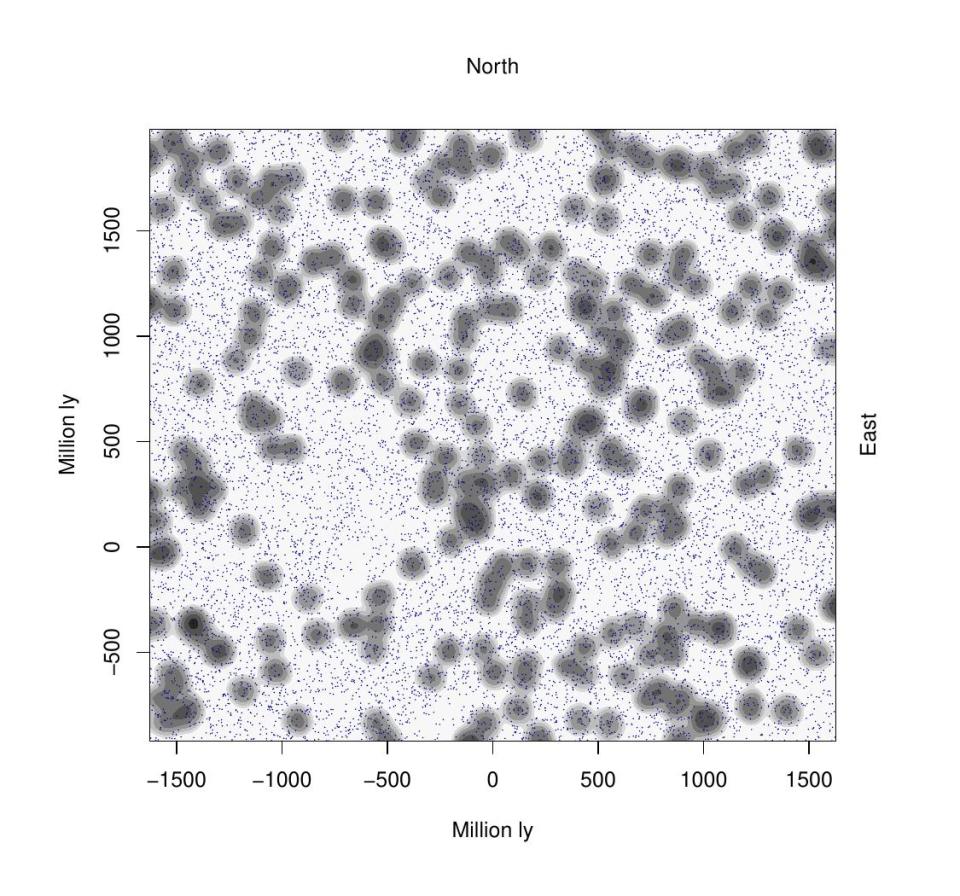Scientists have discovered a massive ring-shaped structure with a diameter of approximately 1.3 billion light-years; They say it is so big that it makes it difficult to understand the universe.
Called the Great Ring, this ultra-massive structure – with a circumference of around four billion light-years – was observed in the distant universe some 9.2 billion light-years away.
The Great Ring, a collection of galaxies and galaxy clusters, appears to be roughly 15 times the size of the Moon in the night sky when viewed from Earth.
This is the second cosmic structure of this size identified by Alexia Lopez, a PhD student at the University of Central Lancashire (UCLan) who discovered the Giant Arc, which spans 3.3 billion light-years of space, about three years ago.

He said: “Neither of these two ultra-large structures is easy to explain with our current understanding of the universe.
“And their ultra-large size, distinct shapes, and cosmological proximity must surely be telling us something important – but what exactly?”
Ms. Lopez’s findings, presented at the 243rd meeting of the American Astronomical Society (AAS), appear to challenge the cosmological principle that, on a large scale, the universe should look roughly the same everywhere.
The general view is that large structures in the universe are formed by a process known as gravitational instability, but there is a size limit to this, which is about 1.2 billion light-years.
There wouldn’t be enough time for anything greater than this to occur.
Ms Lopez said: “The cosmological principle assumes that the part of the universe we can see is seen as a ‘fair example’ of what we expect the rest of the universe to be like.
“When we look at the universe on a large scale, we expect matter to be distributed equally throughout space, so there should be no noticeable irregularities above a certain size.
“Cosmologists estimate the current theoretical size limit of the structures to be 1.2 billion light-years, but both of these structures are much larger; The Giant Arc is almost three times larger, and the circumference of the Great Ring is comparable to the length of the Giant Arc.


“We didn’t think structures on this scale were possible based on current cosmological theories.”
There are similar large structures discovered by other cosmologists; such as the Sloan Great Wall, which is approximately 1.5 billion light-years long, and the South Pole Wall, which is 1.4 billion light-years wide.
But the largest single entity scientists have detected is a supercluster of galaxies called the Hercules-Corona Borealis Great Wall, which is about 10 billion light-years across.
For comparison, the observable universe is approximately 93 billion light-years in diameter.
Both the Great Ring and the Giant Sagittarius appear to be in the same neighborhood, near the constellation of the Bootes, Ms. Lopez said.
Although the Great Ring appears to be a nearly perfect ring in the sky, analysis by Ms. Lopez suggests it has more of a coil shape, like a corkscrew, with its face aligned with the Earth.
Ms Lopez said: “This data we are looking at is so far away that it took half the lifetime of the universe to reach us; from a time when the universe was about 1.8 times smaller than it is now.
“The Great Ring and the Giant Arc, both individually and together, present us with a great cosmological mystery as we seek to understand the universe and its evolution.”
Ms Lopez, along with her supervisor Dr Roger Clowes (also from UCLan) and collaborator Gerard Williger from the University of Louisville in the US, used a technique called magnesium II (MgII) to make the discoveries.
It involves observing cosmic matter in the universe and otherwise invisible galaxies by transforming quasars, the extremely energetic and bright celestial bodies found at the centers of some galaxies, into giant lamps.
Commenting on the research, Professor Don Pollacco, from the Department of Physics at the University of Warwick, said further research was needed to ensure the discovery of these ultra-large structures.
He said: “The likelihood of this occurring is vanishingly small, so the authors speculate that the two objects are actually related and form an even larger structure.
“So the question is: How do you build such large structures?
“It is incredibly difficult to envision any mechanism that could produce these structures; instead, the authors propose that we are seeing a remnant from the early universe, where waves of high- and low-density material were ‘frozen’ in the extragalactic medium.”